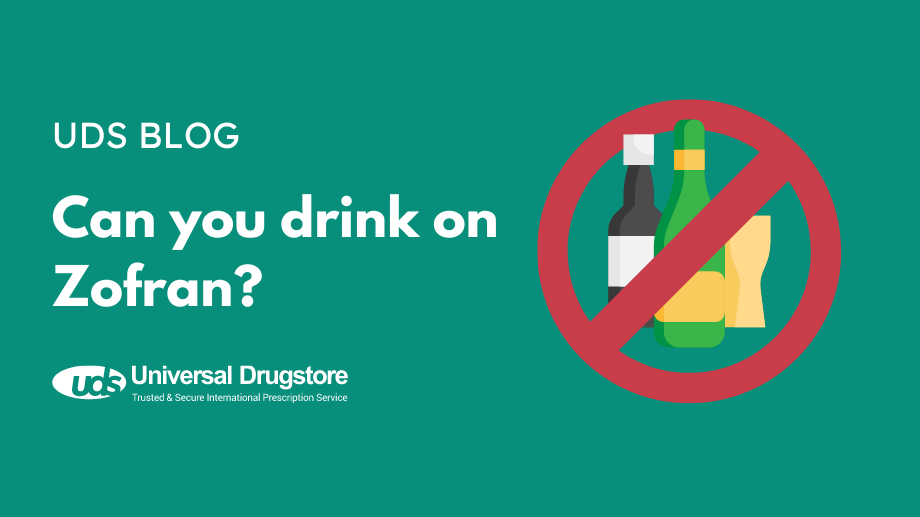Can Zofran cause cleft lip?

Zofran (ondansetron) is approved by the Food and Drug Administration (FDA) for treatment of nausea and vomiting after chemotherapy, radiation therapy, or surgery. It is also used off‑label to treat nausea and vomiting of pregnancy (NVP), also known as morning sickness. Severe NVP (hyperemesis gravidarum) may require hospitalization.
Zofran crosses the placental barrier, and first‑trimester exposure may increase the risk of orofacial cleft defects (cleft lip and cleft palate) in newborns. Two large studies have evaluated this risk:
Retrospective cohort study (2000–2013)
Over 1.8 million pregnancies were analyzed, with 4.9 percent exposed to ondansetron in the first trimester. This study found approximately 3 additional cases of oral clefts per 10,000 exposed pregnancies, with no increased risk of heart defects.
Control study of 5,500 pregnancies
In this study, first‑trimester ondansetron exposure was associated with a higher rate of oral clefts, but the increase did not reach statistical significance (adjusted odds ratio 1.30, 95 percent confidence interval 0.75 to 2.25).
Legal and marketing actions
Based on these and other findings, including a CDC investigation, GlaxoSmithKline paid $3 billion to the Department of Justice for improperly promoting Zofran during pregnancy and providing kickbacks to prescribers.
Despite these findings, the absolute risk remains low. Untreated severe nausea and vomiting in pregnancy carries serious risks such as dehydration and electrolyte imbalance, which may require hospitalization. Discuss all treatment options with your healthcare provider.
What is Zofran used for?
- Prevention of nausea and vomiting from chemotherapy or radiation
- Postoperative nausea and vomiting
It is also used off‑label for morning sickness in pregnancy.
How does Zofran work?
Zofran belongs to the class of 5‑HT3 receptor antagonists. It blocks serotonin receptors in the brain’s vomiting center, reducing nausea and vomiting.
Side effects of Zofran
- Headache
- Dizziness or lightheadedness
- Drowsiness
- Constipation
- Diarrhea
- Tiredness
Serious side effects requiring immediate medical attention:
- Severe allergic reaction: rash, hives, facial or lip swelling, trouble breathing
- Serotonin syndrome: rapid heartbeat, sweating, muscle stiffness or spasms, fever, confusion
- Abnormal heart rhythm (QT prolongation): chest pain, heart rate changes, shortness of breath, severe dizziness
- Masking of stomach blockage: absence of bowel movements or gas after surgery or chemotherapy
These are not all possible side effects. Always seek medical advice and report adverse events to the FDA at www.fda.gov/medwatch or 1‑800‑FDA‑1088.
Drug interactions
Zofran may interact with other medications, vitamins, or supplements. Inform your healthcare provider about everything you take, including:
- Serotonergic drugs (SSRIs, SNRIs, MAO inhibitors)
- Drugs affecting cytochrome P450 enzymes (carbamazepine, phenytoin)
- Alfentanil, atracurium
- Tramadol
- Chemotherapy agents
- Apomorphine
- Fentanyl
Warnings and precautions
Do not take Zofran if you are allergic to ondansetron, any inactive ingredients, or similar medications such as dolasetron, granisetron, or palonosetron. Avoid concomitant use with apomorphine due to risk of severe low blood pressure and loss of consciousness.
Before starting Zofran, discuss if you have:
- A history or family history of long QT syndrome or QT prolongation
- Congestive heart failure or slow heart rhythm
- Phenylketonuria (orally disintegrating tablets contain phenylalanine)
- Liver disease
- Blockage in your digestive tract
Is Zofran safe while breastfeeding?
Consult your healthcare provider if breastfeeding, as studies in animals show ondansetron passes into breast milk. Monitor infants for sedation or feeding difficulties.
Has Zofran been recalled for birth defect risk?
No recalls have been issued due to potential birth defect risks. Several lawsuits have been filed related to marketing practices and risk disclosures.
Related Medications
- Kytril (granisetron)
- Aloxi (palonosetron)
- Emend (aprepitant)
- Reglan (metoclopramide)
- Phenergan (promethazine)
- Diclectin (doxylamine succinate/pyridoxine hydrochloride)
Sources
- Ondansetron (Rx). Medscape. Accessed Aug. 12, 2024.
- Zofran. Prescriber’s Digital Reference. Accessed Aug. 12, 2024.
- Huybrechts KF, et al. Association of maternal first‑trimester ondansetron exposure with cardiac malformations and oral clefts in offspring. JAMA. 2018;320(23):2429–2437. DOI:10.1001/jama.2018.18307. Accessed Aug. 12, 2024.
- Fejzo MS, et al. Ondansetron in pregnancy and risk of adverse fetal outcomes in the United States. Reprod Toxicol. 2016;62:87‑91. Accessed Aug. 12, 2024.
- Bérard A, et al. New evidence for concern over the risk of birth defects from medications for nausea and vomiting of pregnancy. J Clin Epidemiol. 2019;116:39‑48. Accessed Aug. 12, 2024.




